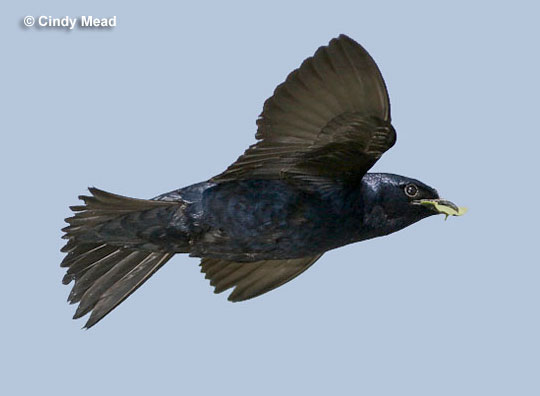Purple Martin (Progne subis) is a common, big swallow with a forked tail. Males are glossy dark purple while females are gray and purple with pale collars and bellies.
If you see big, dark swallows flying around, you are probably seeing Purple Martins. As long as martin houses are present, Purple Martins can forage over urban areas, suburbs, farms, and other places.
Have you wondered where you can see Purple Martins? See this article to learn all about this beautiful swallow species!
On this page
Identification
Male
The male Purple Martin is a big, glossy, dark purple swallow with a big head. When flying against a pale sky, they can look all black. However, in other lighting, we can see their beautiful, shiny, dark purple plumage. These swallows also have a short but wide beak, big dark eyes, and long pointed wings.
On average, they are 8 inches long, have an 18-inch wingspan, and weigh 2 ounces. In North America, males of this species are pretty easy to identify. They are the only large and hefty swallow species, and the only one that has completely dark plumage.
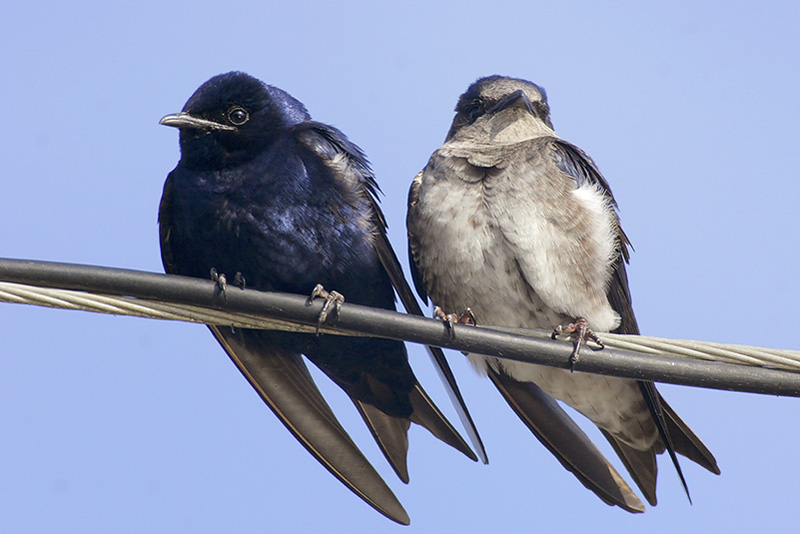
Male and female. Photograph © Greg Lavaty.
Female
The female Purple Martin is the same size and shape as the male but has different plumage. Like males, they are big swallows, much larger than Barn Swallows and other species that live near them.
They also have a big head, and a rather long tail with a shallow but prominent forked tip. They also fly and glide on long, pointed wings and have a short but wide beak.
However, instead of being all dark, female Purple Martins are mostly gray. They have dark purple on some of their upperparts but have a pale gray front, collar, and underparts. The juvenile Purple Martin resembles adult females but has a more contrasting pale belly.
Vocalizations
The Purple Martin is a very vocal bird. A commonly heard Purple Martin sound is a warbling churr and other brief warbling and melodious calls. Males also sing a warbling churring song that also includes trills and clicking sounds. They usually sing while perched on or near a nest site, but can also sing in flight.
When alarmed, this species also makes higher-pitched zeet calls, and females make a choo sound when they lead their fledgling broods around. Another Purple Martin call is a hee hee sound made by birds fighting over territories.
Food
Purple Martins eat flying insects – mosquitoes, moths, dragonflies, wasps, you name it. On rare occasions, they can eat caterpillars on the ground and take insects from foliage, but they mostly eat insects in flight. They also eat a wide variety of bugs, just about any species they find in the air.
The insects Purple Martins eat depend mostly on what’s available. For example, in some places, they mostly feed on scarab beetles, other types of beetles, flying ants, and flies. In other places, they might catch more butterflies or grasshoppers. This large swallow has also been seen eating insects as large as cicadas!
Purple Martins forage by flying high in the air and watching for insects. When they see a bug, they swoop in and catch it with their wide mouth.
One of the main reasons why we don’t see as many Purple Martins during the day is because they often forage 150 feet up, or even a thousand feet overhead!
They can forage for flying bugs over any habitat but may prefer skies over old fields, parks, wetlands, and forest.
While foraging, this swallow species also visit the ground to eat grit. Like some other birds, they ingest tiny rocks to help them break up and digest hard insect exoskeletons.
Nesting and Eggs
After arriving back to breeding grounds, male and female Purple Martins pair up and check several nest cavities. In the eastern part of their range, Purple Martins nest in colonies in martin birdhouses, hollow gourds, or even in traffic lights.
In the west, they also nest in natural cavities, such as old woodpecker holes, under bridges, and in single nest boxes.
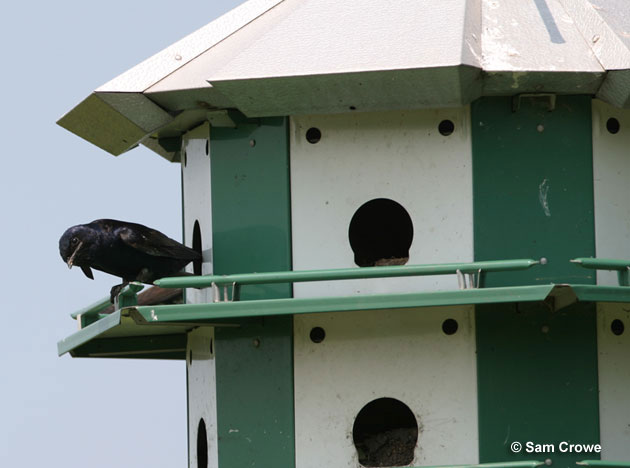
After picking a suitable cavity, the female builds a shallow nest out of twigs, grass, and other bits of vegetation.
A Purple Martin nest also usually has mud at the base of the entrance hole. Males can also bring some materials, especially green leaves, but the female Purple Martin does most of the work.
The female swallow also does most of the incubation. Purple Martin eggs are white, and one inch long, There are three to six eggs and they weigh .14 ounces each. They hatch after 15 to 18 days, and shortly after hatching, both sexes feed their helpless babies regurgitated insects. As the young birds grow, the parents bring and place bugs directly into their mouths.
The fledglings leave their nest 27 to 36 days after hatching and are led to another nearby area by their parents. The adults continue to feed their young for five to seven days after they leave the nest.
Current Situation
Purple Martin habitat includes parks, residential areas, and other places with artificial nesting sites. They breed in the eastern USA and parts of central and eastern Canada. This species is also an uncommon breeding bird in the Rocky Mountains, the Sierra Nevada, along the Pacific coast, in deserts, and in northern Mexico.
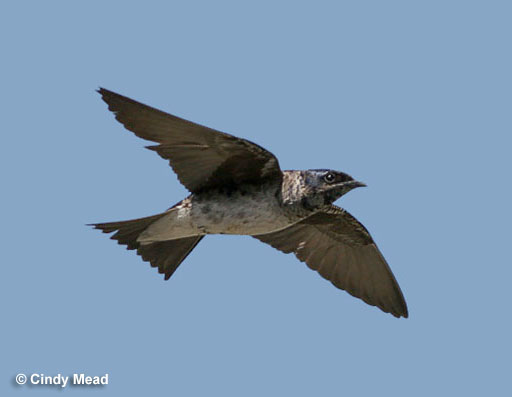
Purple Martins are long-distance migrants. When the breeding season ends, they migrate to open and wetland habitats in South America, especially southern Brazil and Bolivia.
They are listed as Least Concern in the IUCN Red List and are fairly common in most parts of its large range.
The Purple Martin is a common bird in most of its eastern range but has declined in some regions.
In western North America, they have been affected by competition over nest sites with House Sparrows and European Starlings. Reductions in insect numbers have caused declines in Purple Martin populations.
However, this species is still common in most places and can be easily helped by installing martin bird houses and limiting pesticide use.
Facts
- Purple Martins often catch insects with acrobatic flight maneuvers. One of their signature moves is swooping underneath the bug and then spreading their tail as they snatch it in the air.
- People have been putting up nesting sites for Purple Martins for hundreds of years. Native Americans put up hollowed out gourds for Purple Martins long before Europeans arrived in North America.
- There is a common belief that the first Purple Martins in spring are “scouts” that make sure nesting areas are safe before the other birds arrive. However, these “martin scouts” are just older, more experienced martins. They that want to get to their breeding grounds first so they can choose the best nesting sites.
- In late summer, Purple Martin roosts can number in the thousands. They can be so big and dense that they are easily seen on RADAR!
- In 1831, John James Audubon wrote about seeing Purple Martin nest boxes on many taverns and inns. He even picked where he would stay based on the appearance of the martin nest box!
Similar Species
In North America, the Purple Martin is one of the easiest swallow species to identify. However, since they can be hard to watch when flying high overhead, they could be confused with a few similar species.
Cliff Swallow
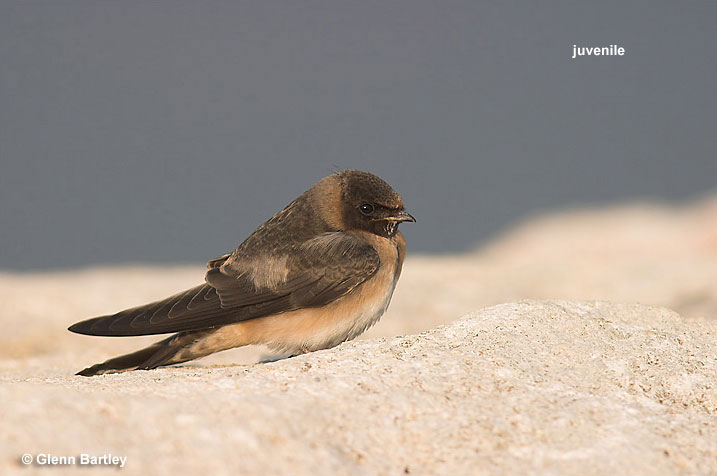
Cliff Swallows also flies high overhead. However, it does not have the strongly forked tail of the Purple Martin. Cliff Swallows have a pale front like female Purple Martins, but Cliff Swallows also have a contrasting dark throat on pale underparts. Purple Martins are larger in size, and they are the largest swallows in the world.
Tree Swallow
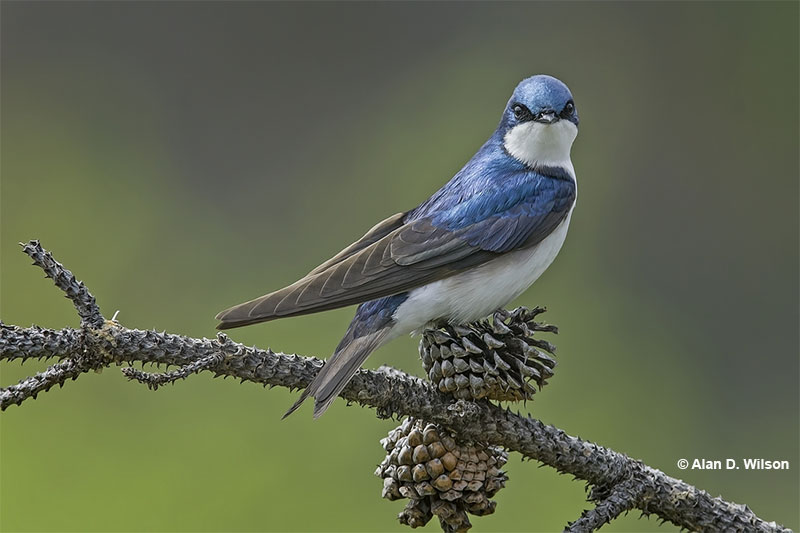
Tree Swallows also have forked tails and live in the same places as Purple Martins. However, they are dark above and white below. Purple Martins are either all dark, or grayish with pale collars and fronts.
Barn Swallow
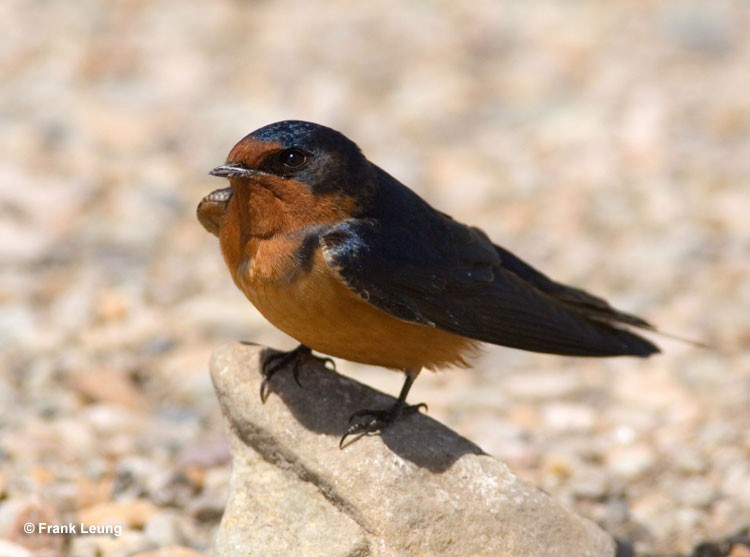
The Barn Swallow can also be seen with Purple Martins. However, this bird is smaller and more elegant and has a longer, slender forked tail. They also have orange coloration on their underparts, and a chestnut throat.
Frequently Asked Questions
How rare are Purple Martins?
Purple Martins are not rare. In most parts of their range, they are common summer birds.
What is so great about Purple Martins?
Purple Martins are great birds to have in neighborhoods because they eat lots of bugs. They are also beautiful and friendly birds.
Is it hard to attract Purple Martins?
No, in much of their range, it is not hard to attract Purple Martins. They readily nest in martin nest boxes or “houses”.
What is the lifespan of a Purple Martin?
The lifespan of a Purple Martin can be 13 years but most live for around 4 or 5 years.
What do Purple Martins eat?
Purple Martins eat a wide variety of flying insects.

